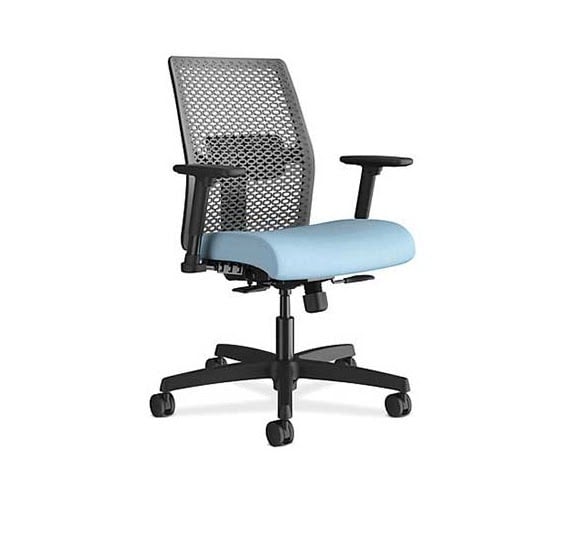
A Harvard Business School Online survey showed 81% of workers would like to work remotely either full-time or part-time.
Many companies are giving employees what they want by transitioning to a hybrid model that allows them to work remotely at least one day per week. Other companies may have a percentage of employees who are 100% remote while the rest work in the office.
Regardless of your model, the increased number of remote employees brings unique challenges, such as making those working off-site feel just as valued and integral to the company’s success as their in-person counterparts.
Here are four ways to show appreciation for your remote employees:
Keep Them Connected
One concern with a hybrid workforce is that in an office setting, ideas are not always shared in formal settings but rather in the hallway or by the watercooler. This could give those working on-site an advantage when it comes to promotions or project team selections.
Even the playing field by deliberately keeping remote employees in the loop. Have managers schedule regular one-on-one video conferencing time with their remote employees to ensure a strong working relationship.
Since managers and their remote staff don’t have the chance to build relationships through informal, impromptu conversations, they should allow some extra time for informal conversations.
Bhushan Sethi, a leader at PwC, suggested that managers encourage remote workers by working off-site themselves at times. As an added bonus, they can see firsthand what works and what doesn’t when it comes to working remotely.
While companies should make sure to use videoconferencing to include remote employees in any relevant meetings taking place in the building, avoid relying too heavily on videoconferencing.
Insightly Founder and CEO Anthony Smith says companies should consider cutting back on meetings altogether.
“Zoom fatigue is real, and meetings are no more popular now than they were when we worked in physical offices,” Smith writes on Forbes.com. “Keep your meetings to the minimum and prioritize clear, consistent, and written communication.”
For employees who are 100% remote, consider bringing them into the office quarterly or at least a couple of times a year to connect with their co-workers and supervisors in person, collaborate on projects and have casual breakroom conversations.
Party Down
“All work and no play makes Jack a dull boy” is an old saying that rings especially true when it comes to remote employees.
You may be bending over backward to make sure remote employees feel included in day-to-day office life, but what about the fun stuff?
Achurch Consulting offers several suggestions for “virtual watercooler practices” that can help recreate, to a point, some of the opportunities for camaraderie that occur organically in the office. These include:
- A watercooler channel on Slack or Teams, complete with fun conversation starters
- A Zoom meeting that’s left open all day so employees can pop in at will
- Virtual meetups centered around murder mysteries, book discussions or even art classes
Make online meetups extra fun by hosting them during lunch, extending employees’ lunch breaks, and providing everyone with a takeout meal delivered to their desk — wherever that desk may be.
Also, don’t assume that if an employee is working remotely it means they never want to leave their house, so invite them to in-person social events, especially if they are somewhat local. Better still if childcare is provided on-site (with proper safety protocols, of course) during the function.
There may be some remote employees who truly can’t attend in-person events, so it’s important to offer a mix of virtual and analog social activities.
Recognize
An article on Glassdoor.com cites surveys that indicate employees are likely to be more engaged if they feel recognized at work and are more likely to want to quit if they don’t.
Make sure you take the time to recognize your remote employees just as you would those working in the office. This means using the same awards and recognition tools for all employees, such as certificates and plaques.
According to Glassdoor, employee recognition must be:
- Timely - taking place within a few hours of the positive event
- Specific - noting exactly what that particular employee did to deserve recognition
- Conscientious - given in a way the employee is comfortable with (for example, sending a private email to a shy employee versus gushing about them during a company-wide conference call)
All of these criteria are just as easy to meet using remote forms of communication as they are with in-person ones.
Supervisors should begin one-on-one meetings by mentioning something their employees have been doing well. This shows them that their work is making a difference and that people are taking notice, even if they aren’t there in person.
Finally, who doesn’t love getting packages in the mail? During a busy period or difficult projects, send care packages — bonus points for including their favorite snacks or candy — to the employee’s home. You can also send gifts to celebrate special occasions in their career or life or to welcome new remote employees.
Set Them Up for Success
The right tools and resources can go a long way toward helping an employee do their job well (which you can then recognize them for). Here are some ways to set remote employees up for success:
Home office haven
When working remotely was only a temporary arrangement, sitting at the dining room table all day was (mostly) fine.
But Grandma’s old wooden side chair isn’t going to cut it for the long term. Not to mention there might be other people in the house who eventually want to use that dining room table for its intended use.

Whether their home office is a room, a part of a room, or even a converted closet (cloffice?), providing remote employees with a computer, a desk, an ergonomic chair, and perhaps even a printer, is a great start toward helping them create a space where they can focus on their work — without being distracted by searching for chiropractors on the internet.
Some companies have even provided remote employees with a home office stipend so they can make the space their own with decor and any office accessories they might need.
A designated office area can help remote employees separate their work lives from their home lives. Without some kind of delineation, it’s easy to fall into the trap of feeling like they’re never fully away from their work, and that can be a recipe for burnout.
Tech Check
Technology can be a fickle beast, so ensuring employees have the right technological tools for their jobs and access to support is an ongoing effort.
Similar to regular video meetings with management, remote employees could benefit from scheduled check-ins with a company IT professional. They can get help with their internet connections or speed, make sure their hardware and software are in good working order, and learn how to use any new internal tools.
These check-ins will not only help employees learn to best utilize the technology at their disposal, but will let them know their company is there for them even if they’re not physically in the office.
Keep it Professional
Access to professional development is an important way to increase engagement in your workforce — remote or otherwise.
While remote employees should feel welcome to take advantage of in-person development opportunities if they can, make sure they're offered plenty of virtual options as well.
True appreciation
While sending lunches to remote employees’ homes and giving them a shoutout for a job well done are great ways to thank them for their work, true appreciation lies in what those things represent.
Make a conscious effort to ensure all employees feel included, regardless of their location, to create a culture of positivity and collaboration.
Want to see what your colleagues are doing to reinvent their workspace? Check out the results of our Back to Work survey!



